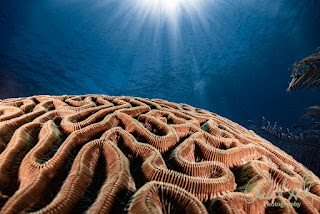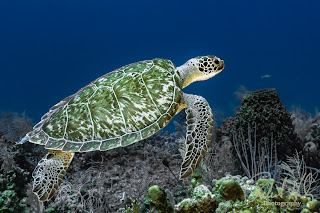The Art and Adventure of Wreck Diving
Capturing Underwater Time Capsules:
Over the course of my 56 years of Scuba Diving and 36 years of Underwater Photography, I have had the chance to dive hundreds of wrecks around the world, both in cold water and tropical locations. I find wreck diving to be one of my top things to do both for the history, challenges, beauty, and a world of opportunity for photography.
Beneath the surface of the world's oceans lies a hidden realm of history, mystery, and exploration—shipwrecks. These underwater time capsules tell tales of bygone eras, lost voyages, and maritime tragedies. Wreck diving is a thrilling adventure that allows explorers to immerse themselves in the secrets of the deep. In this blog post, I'll delve into the fascinating world of wreck diving, exploring the specialized training, equipment, preparation, risks, rewards, and techniques for capturing the mystique of shipwrecks through the lens of a camera.
Specialized Training:
Wreck diving is not your average underwater excursion. It demands specialized training to ensure the safety of divers and the preservation of these historical sites. Enrolling in a wreck diving certification course is crucial for mastering the unique skills required. The training typically covers topics such as navigating through confined spaces, managing potential entanglements, and understanding the history and preservation of wrecks.
Specialized Equipment:
Wreck divers rely on specialized equipment designed for navigating and exploring underwater structures. This may include dive lights, reels and lines, dive knives, wreck reels or spools, and underwater camera gear to capture the unique beauty and historical significance of the wrecks.
Preparation for the Dive:
Before embarking on a wreck diving expedition, thorough preparation is key. Research the history of the shipwreck, check weather forecasts and dive conditions, establish clear communication plans, and have a well-thought-out emergency plan.
Risks and Rewards:
Wreck diving offers a unique blend of risks and rewards. Challenges include limited visibility, entanglement risks, and penetration hazards. The rewards of wreck diving, however, are immeasurable. Discovering a shipwreck is like stepping back in time, witnessing history frozen in the underwater depths.
Advanced Techniques for Wreck Diving Photography:
Taking your wreck diving photography to the next level involves mastering advanced techniques. Strobe lighting, HDR imaging, 360-degree panoramas, and storytelling through sequences can elevate your images and create a more immersive experience.
Strobe Lighting: For divers exploring wrecks in low-light conditions or deep waters, strobe lighting can be a game-changer. Position strobes strategically to eliminate shadows and highlight key features.
HDR Imaging: High Dynamic Range (HDR) imaging is excellent for capturing the full spectrum of light in challenging lighting situations. This technique blends multiple exposures to create a balanced and detailed image, crucial when navigating through the dark interiors of wrecks.
360-Degree Panoramas: Create immersive experiences by capturing 360-degree panoramas of the wreck site. This technique allows viewers to virtually explore the entire underwater environment, providing a more comprehensive understanding of the ship's layout and surroundings.
Storytelling through Sequences: Instead of relying on standalone images, consider creating a visual narrative by capturing a series of shots that tell a story. This approach can convey the progression of your exploration and highlight different aspects of the wreck.
Preservation and Responsible Diving:
Wreck diving comes with a responsibility to preserve these historical sites for future generations. Follow principles such as no touching, maintaining proper buoyancy, respecting marine life, and taking only photos, leaving only bubbles.
Specialized Courses for Wreck Archaeology:
For divers with a deep passion for maritime history, specialized courses in wreck archaeology provide an in-depth understanding of research, documentation, and preservation techniques.
The Future of Wreck Diving:
As technology continues to advance, the future of wreck diving holds exciting possibilities. Underwater drones and virtual reality experiences may provide new ways to explore and appreciate underwater cultural heritage.
Conclusion:
Wreck diving is more than a recreational activity; it's a journey into the past, a chance to unravel the stories of sunken vessels, and an opportunity to contribute to the preservation of underwater cultural heritage. Whether you're a seasoned wreck diver or someone intrigued by the mysteries beneath the waves, the world of wreck diving photography awaits, offering a unique blend of adventure, history, and artistic expression. Dive in, explore responsibly, and let your camera tell the tales of these submerged time capsules.
Let me assist you in your underwater photographic journey with my upcoming online training course, which I will be announcing soon. If you are keen on acquiring more knowledge about it, kindly email me at bob@robertherb.com. You can also visit my website (Robert Herb Photography) to view some of my exemplary work.
I am eagerly anticipating your valuable feedback and suggestions.
Sincerely,
Bob Herb




Comments
Post a Comment
Please let me know your comments.